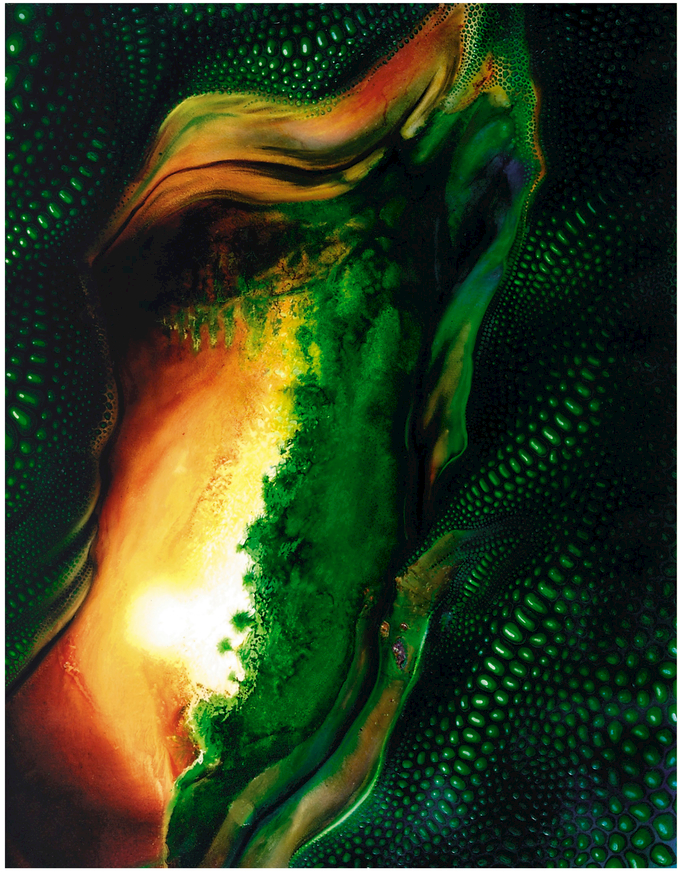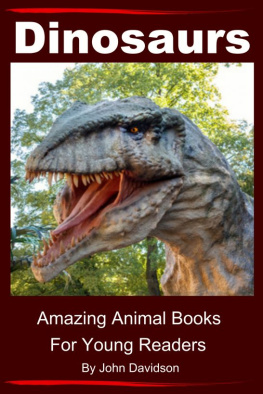
Dinosaur Dictionary for Kids
The Everything Guide for Kids Who Love Dinosaurs
Dinosaur Dictionary for Kids
BobKorpella



Dedication
For Brooklyn Horner and Kierce Horner
First published in 2016 by Prufrock Press Inc.
Published 2021 by Routledge
605 Third Avenue, New York, NY 10017
2 Park Square, Milton Park, Abingdon, Oxon OX14 4RN
Routledge is an imprint of the Taylor & Francis Group, an informa business
Copyright 2016 by Taylor & Francis Group
Edited by Katy McDowall
Cover and layout design by Raquel Trevino
All rights reserved. No part of this book may be reprinted or reproduced or utilised in any form or by any electronic, mechanical, or other means, now known or hereafter invented, including photocopying and recording, or in any information storage or retrieval system, without permission in writing from the publishers.
Notice:
Product or corporate names may be trademarks or registered trademarks, and are used only for identification and explanation without intent to infringe.
Library of Congress Cataloging-in-Publication Data
Names: Korpella, Bob, author.
Title: Dinosaur dictionary for kids: the everything guide for kids who love dinosaurs / by Bob Korpella.
Description: Waco, Texas: Prufrock Press Inc., [2016] | Audience: Grades 4 to 6. | Includes bibliographical references and index.
Identifiers: LCCN 2016010050
Subjects: LCSH: Dinosaurs--Juvenile literature. | Dinosaurs--Dictionaries, Juvenile.
Classification: LCC QE861.3 .K67 2016 | DDC 567.903--dc23
LC record available at http://lccn.loc.gov/2016010050
ISBN 13: 978-1-6182-1513-0 (pbk)
DOI: 10.4324/9781003234708
Table of Contents
Guide

As a naturalist, I'm excited to learn and discover the natural history of life in our world. For me, that usually means aquatic insects and invertebrates, mammals, fish, dragonflies, and damselflies. But dinosaurs present a most incredible journey far back in time to a place we can only begin to imagine. For me, that journey has been enlightening and delightful. I am thankful for all those who shared a portion of the voyage with me:
Helyn, who has always kept me centered and on track, and for her belief in me as I remade my profession, and for her undying support in that quest. Her smile brightens my day and makes me certain I can tackle any task that lies ahead.
Mom, for her constant encouragement and belief that I can make a success of any project I take on. And for the memory of my Dad, always with me in spirit.
Elizabeth, Megan, Brooklyn, and Kierce for their eternal excitement in this project.
The Springfield Chapter of Missouri Master Naturalists, who demonstrated their support in this endeavor from the onset. That support never wavered. This is a most incredible group of people, the finest of which I have ever had the pleasure of being a part.
Hunter, because he is a bright young student with a bold future. His enthusiasm and knowledge of dinosaurs and their world was an inspiration.
Mary Anning and all the early paleontologists whose discoveries brought to light an amazing era in the Earth's history. Their research and discoveries launched a movement that survives to this day.
Curious children everywhere whose fascination keeps dinosaurs alive for all of us.
All the folks at Prufrock Press for the design, layout, and production of this book. A very special thanks to Katy McDowall, for the excellent direction she provided, for editing this book, and for her patience with me throughout the process, and Raquel Trevino for her outstanding design from cover to cover, as well as the many illustrators who contributed their art.
This remarkable trip means I will never look at the world in quite the same way again. The realization that incredible beasts roamed the same places where I've lived, or that swimming reptiles and ancient fish populated the shallow sea close to where I make my home today give new perspective to the past. Researching and writing this book erased the eons of time between the age of dinosaurs and us, breathing new life into how I imagine the planet looked and behaved long ago. My sincere hope is that you, too, will find the same awe and wonder that I did as you take your own journey back in time while reading this book.

Argentinosaurus
DOI: 10.4324/9781003234708-1
Picturing dinosaurs and the world in which they lived tickles the imagination. Creatures that disappeared from the planet 65 million years ago become vivid in our minds as we read and study them. But think about itsome of the biggest animals to have ever roamed the Earth may have walked across what is now your back yard. Their fossilized bones may rest beneath your own basement!

spinosaurus and psittacosaurus
Paleontologists constantly find new information about the Mesozoic Erathe time of the dinosaursthrough new discoveries, research on bones stored away and forgotten, or new experiments that reveal details that scientists centuries ago could not have dreamed.
What color were dinosaurs? That is becoming clearer than ever before. Are birds really related to those gigantic beasts of the past? The links are surprising and the evidence mounting. Did dinosaurs communicate with sounds? Some, it appears, did exactly that. Were any dinosaurs feathered? Yesmore than you might realize.
Not every discovery comes from a trained paleontologist. A 14-year-old boy made one new discoverya dinosaur named Bambiraptor after the famous Disney character. Mary Anning walked the beaches of England in the 1800s, searching for fossils she documented with incredible accuracy. Fossils sometimes show up in farmers' fields, when workers build a bridge, or when rocks are dug from a quarry. Touching a fossil, seeing one on display in a museum, or reading about the dinosaur that left the remains brings it all a little closer to home.
After all, dinosaurs perished about 65 million years ago after surviving through incredible changes in the world for 186 million years. That length of time proves difficult to visualize. Imagine a piece of paper representing one year. Stack 10 or 15 papers and they represent a student who is 10 or 15 years old. It's not a very tall stack. A ream of computer paper is around 2 inches high and contains 500 sheets of paper, or 500 years. Piling reams of paper to represent 65 million years would result in a stack about 20,000 feet high, the cruising altitude of a small jet. And that represents how long ago the last dinosaur vanished. The stack of papers reaching back to when dinosaurs first appeared would be about 80,000 feet high, or about 15 miles.
Next page



















